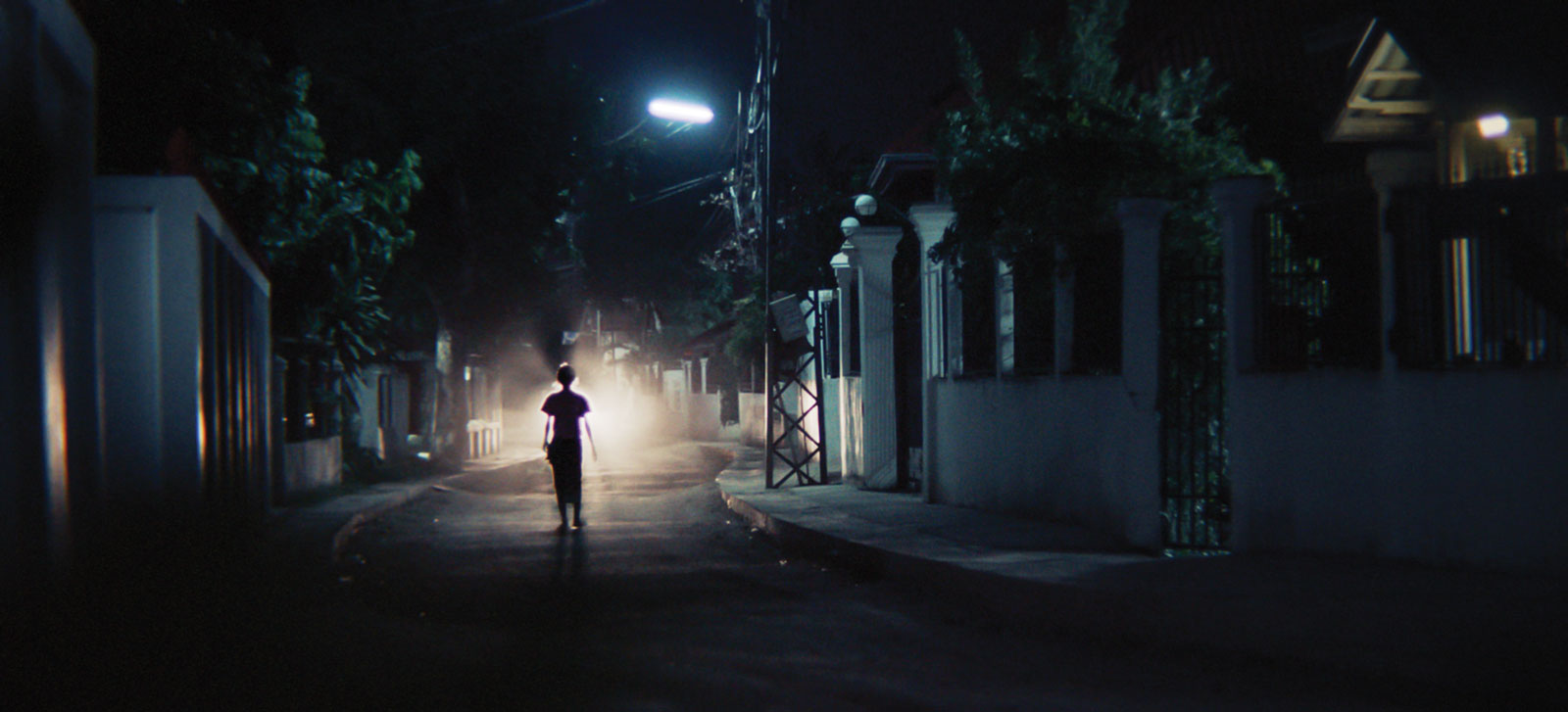Mattie Do does not hold back. In her films, the women drink, they wear lingerie, they steal, they murder. In the final moments of Dearest Sister, Do’s 2016 horror, protagonist Nok and her blind cousin Ana are held captive by Ana’s former servants. In a feverish confrontation, Ana charges towards her cousin, knife in hand. The screen goes black. For Do, Laotian girls are not “innocent, mystic lotus blossoms subservient to men… We burned that myth up.”
Shot with an eerie delicacy that forgoes traditional jump-scares, Dearest Sister is less concerned with blood and guts than with telling an authentic story of social class that is causing a stir in conservative Laos.
“It highlighted Laos in probably one of the most raw and truthful ways that anyone has ever seen on screen,” says Do, by all accounts the first and only female film director in the country.
Refusing to fall back on outdated tropes of Asian cinema – depictions of the elite upper class or demeaning poverty porn, according to Do – the film shocked audiences. “It shows a lot of our hierarchy, the way our society is built around materialism… and it showed the way rich people in Laos treat people from lower economic classes and our obsession with trying to climb up to that upper echelon… so we can further the cycle of treating lower class people like slaves. It’s a pretty harsh film actually,” Do says.
The $250,000 production – only the 13th feature film in the country’s history – didn’t just strike a nerve with local audiences, it also became the first movie that Laos has submitted to the Academy Awards.
Prior to 1975, film was virtually non-existent in Laos save for the propaganda produced and screened by the country’s warring royalist and communist camps. And it would be 2008 before the country produced its first independent feature film, Good Morning Luang Prabang. Directed by Sakchai Deenan, it was a deliberately simple romantic comedy that conformed to the government’s censorship policies. At the time, though, it was optimistically touted as the push that the country’s nascent film industry needed. In the end, with funds desperately lacking and the watchful eye of the communist government’s Cinema Department overseeing the industry, things moved slowly.

Ten years later, a new generation of filmmakers is finally breaking the status quo. Do and Anysay Keola, arguably the two biggest names in Lao cinema, refuse to yield to popular opinion, shying away from the melodramatic style imported from Thailand. Instead, their unique brand of art house cinema pushes the boundaries of state-imposed censorship and generates international headlines in the process.
Nevertheless, Laotian filmmakers are still far from enjoying lavish, Hollywood budgets. “I was the only one who was able to pull off a completely no-budget film at $4,500. It involved my friends working for next to nothing. My dog was a star. We filmed it in our house,” Do says of her debut, Chanthaly, widely touted as the first horror film made in Laos.
Keola’s first film, 2011’s At the Horizon, has a similar story – starting with zero contacts, the young filmmaker recruited his team through YouTube.
Their relative success, however, opened the door to international co-productions – and the larger budgets that come with them. If Dearest Sister’s $250,000 budget was still staggeringly low by international standards, the extra cash allowed Do to hire a professionally trained crew and technicians, and provided a boost to the film’s production values, from costumes to music.
“Generally, having the budget jump from about $5,000 to $250,000 allowed me to create and complete a film that could match my vision and goal,” she says.
In addition to slowly swelling budgets, Laos’ nascent film industry is gradually being given the space to succeed on its own terms by the relaxation of censorship. Do remembers presenting Dearest Sister to the government’s Cinema Department as a “nerve-racking” experience.
“They watched it and they wrote down all the notes… and they asked me about the things that they didn’t like,” she says. “They asked me to defend myself. And they allowed me to speak and… give the purpose of why I felt it was necessary to have these elements in the film. And they allowed it to be shown in Laos.”
Do describes considerable progress from her first film, in which the censorship board wanted all girls to be wearing traditional clothes, to her most recent, in which a girl appears in bed in her lingerie because she was able to make the point that “that’s what women wear sometimes when they go to bed”.
“I think they are [getting less strict], by far… I definitely murder someone in my film. And that was not OK before. So as long as you can defend yourself, [and] make the purpose known, I believe that our censorship is willing to work with you,” she says.
Keola describes a similar situation with At the Horizon. “The elements of violence [and] the use of language they didn’t like, so they just rejected [it] at the beginning,” he says.

However, given that the movie doubled as his university thesis, Keola says he was able to convince the authorities to permit him “special conditions” under which the movie could be made but not screened publicly.
Once the film was completed, officials realised that the violence was not central to the film, and so, after a few tweaks, it was approved for public release. Five years later, in 2016, a screening on HBO Asia made it the first Lao film to be shown on a major international TV network.
“[At the Horizon] was a breakthrough… I believe it will also inspire other filmmakers to realise: ‘OK, we can actually do something new,’” Keola says.
Mirroring the industry’s gradual rise over the past decade, the Luang Prabang Film Festival was established in 2009 and has played a major part in championing local cinema. The Unesco World Heritage town has no cinemas – there are just three in the entire country – meaning the festival’s free screenings provide a rare opportunity for Laotians to see films made in Laos.
Founder Gabriel Kuperman feels that, by providing workshops, competitions and other educational activities, the festival is “developing the film industry in the most literal sense by giving [young filmmakers] the skills to be able to be their own media producers… More people are interested in making films than ever before.”
The festival team also put together the selection committee for this year’s groundbreaking Academy Awards submission. “I think it was a terrific step for the Lao film industry and helps [it] to gain more exposure,” says Kuperman. “Everyone who read the articles [detailing] the foreign language recommendations could see: ‘Wow! Laos has a film industry, so let’s check it out.’”


